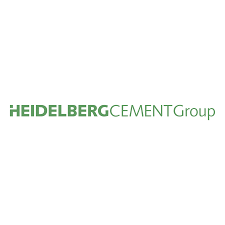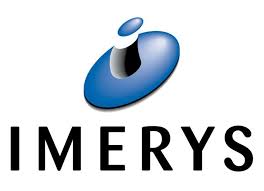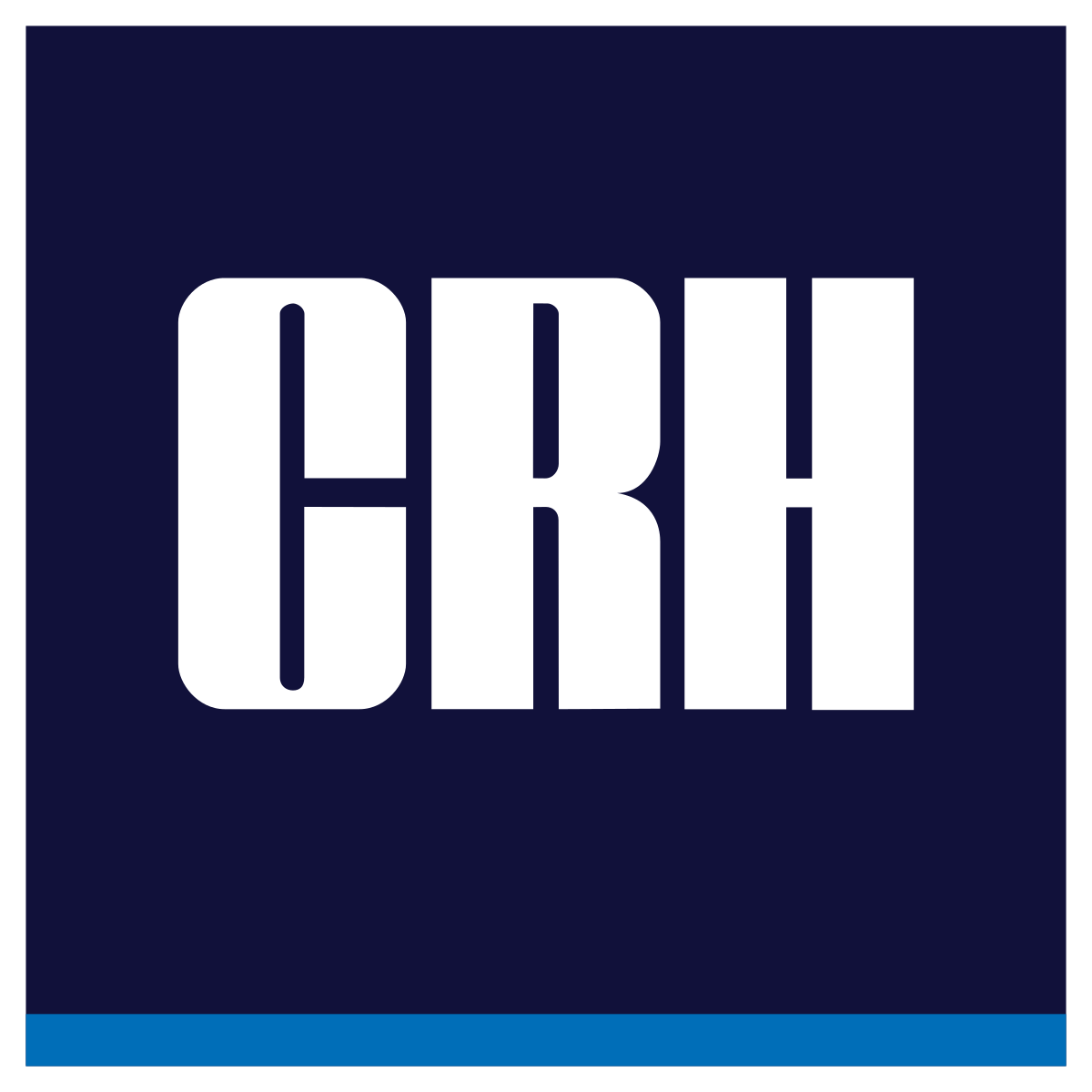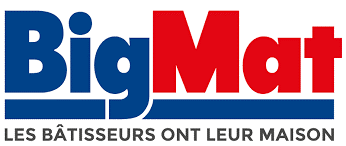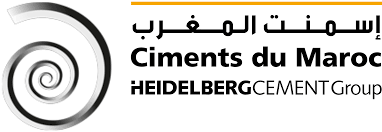Synthèse
The global cement market, valued at around $326.8 billion in 2021, is projected to reach $486.5 billion by 2029, growing at a CAGR of 5.1%. The market is heavily dominated by China, which alone contributed over 50% to the worldwide production of 4.1 billion tonnes in 2022, starkly overshadowing the production rates of the EU-28 and India.
Market concentration continues, with a handful of key players, such as Lafarge-Holcim, dominating production and distribution, which has largely been internalized.
Despite facing an increasing need for sustainability, with forecasts to cut production CO2 emissions by 30%, the market continues to evolve in response to stringent regulations and shifting demand dynamics.
Current State and Trends in the French Cement Market
The French cement market, primarily encompassing the manufacture and distribution of hydraulic binders used in constructing various forms of concrete structures, has been experiencing substantial shifts shaped by both local and international forces. The market structure is chiefly oligopolistic, with a few leading cement manufacturers like Lafarge-Holcim, Ciments Calcia Heidelberg, Vicat, Imerys, and Eqiom holding significant sway. High capital investment and a necessity for scale are substantial barriers to entry, making cement manufacturing one of the industry's most capital-intensive sectors. In 2020, the global cement market exhibited a size of over 18 million tonnes, with projections indicating a Compound Annual Growth Rate of more than 3% for the ensuing five years.
Within the French borders, cement is critical for the construction sector, with almost 50% market share in single-family homes and over 75% in multi-family housing and tertiary buildings. An analysis of sales trends for cement manufacturers in France reveals a revenue slump of approximately 14.7%. However, positive momentum has been observed, with a remarkable growth exceeding 32% by 2022, owing to the resurgence in the construction market post the pandemic-induced downturn.
However, the French market is witnessing a trade deficit with exports decreasing by about 15% from 2017 to 2022, which has simultaneously seen an upsurge in imports by 48%. The primary suppliers of cement imports into France hail from Spain, Belgium, and Algeria. The trade balance has worsened with the coverage rate dipping from 31.3% to 18.2%. Cement's principal application within France is ready-mix concrete, occupying 60% of the usage pie, with the construction and public works domains being the predominant end markets. With over 62.8% of concrete sector sales generated by the building industry, the health of these sectors signals future demand prospects for cement. While construction and public works suffered during the global financial crisis, the French government's construction stimulus package, worth 7.5 billion euros introduced after the COVID-19 crisis, has reinvigorated demand.
Dominant Forces of the French Cement Industry
In the realm of the French cement market, a few titans stand tall, wielding considerable influence over the production and distribution cycles. These players have cemented their positions as the industrial mainstays, contributing significantly to the construction and public works sectors, which are the primary consumers of cement. Below, we delve into the profiles of these market leaders, highlighting their roles in shaping the French cement landscape.
- LafargeHolcim: LafargeHolcim emerges as the undisputed leader in the cement sector. The result of a merger between France's Lafarge and Switzerland's Holcim, this industrial behemoth maintains a robust presence across the entire value chain. LafargeHolcim not only has its quarries supplying the raw materials fundamental to cement production but also possesses a network of concrete production facilities, making it a powerhouse with comprehensive control over its operations. Their initiatives, like the FastCarb project, reflect their commitment to ecological advancement within the industry, aiming to dramatically expedite the natural recarbonization process of concrete.
- Ciments Calcia Heidelberg Cement Group: Operating under the global umbrella of HeidelbergCement, Ciments Calcia is another prominent entity in the French market. The company prides itself on its integrated model, covering everything from extraction to the delivery of the final product. With production operations firmly rooted on French soil and a magnitude of experience, Ciments Calcia ensures premium-quality construction materials that support a wide spectrum of building projects.
- Vicat: Marking its territory as the last independent French cement manufacturer standing after the formation of LafargeHolcim, Vicat holds a distinguished lineage tracing back to Louis Vicat, the man who laid the foundations of artificial cement. Vicat has since evolved into a significant force in the industry, operating several cement plants and grinding centers. It upholds a legacy of quality and innovation, being a domestic favorite that directly contributes to France's construction ventures.
- Imerys Aluminates: Specializing in dedifferentiated forms of cement such as calcium aluminate cements, Imerys Aluminates caters to niches within the market, offering solutions particularly suited for environments demanding high mechanical resistance and durability. Their cement variants find applications in agricultural environments, foundations, and industrial flooring, demonstrating the capacity to address specialized needs within the sector.
- Eqiom Groupe CRH: A subsidiary of the global group CRH.
à la compréhension de ce marché
Détail du contenu
 Informations
Informations
- Nombre de pages : 30 pages
- Format : Version digitale et PDF
- Dernière mise à jour : 21/06/2023
 Sommaire et extraits
Sommaire et extraits
1 Market overview
1.1 Definition and scope of study
Cement is a hydraulic binder used in the manufacture of concrete for slabs, blocks, plasters and mortars. Cement is manufactured by heating a finely ground mixture of limestone, clay and sand to temperatures of up to 1,450°C. This stage results in what is known as clinker, an intermediate product in cement manufacture, which is then cooled and finely ground to produce the powder we call cement.
This is an oligopolistic sector made up of just a few leading cement manufacturers: Lafarge-Holcim, Ciments Calcia Heidelberg, Vicat, Imerys and Eqiom. Heavy initial investment and the need to reach critical size are the main barriers to market entry, making this one of the most capital-intensive activities in the industry.
Worldwide, the market is growing, driven in particular by Chinese production and consumption in emerging countries. China is the world's leading cement producer, accounting for over 50% of global output. It is followed by India, responsible for 8% of global production. Cement is the second most consumed product in the world after water, as it is essential for the construction of concrete. In 2020, the global cement market was worth over 18 million tonnes, and is expected to record a CAGR of over 3% over the next 5 years.
By 2022 in France, cement will account for no less than 50% of the market share for single-family homes and over 75% for multi-family housing and tertiary buildings, with the main outlet being construction, followed by public works. However, a rebound seemed to be in the offing since 2016 and until the Covid-19 crisis, driven by growth in the construction market.
As cement is difficult to transport, production sites are generally located close to consumption points, and the majority of distribution is handled by producers who have integrated the entire value chain.
Last but not least, the cement industry is a cause for concern today, as it is highly polluting. Changing regulations and the forthcoming reduction in CO2 emission quotas are forcing producers to reinvent themselves and develop greener cement. The signing of an industry green deal in 2016 confirmed the efforts that industry players were willing to make in this direction. What's more, the growth in energy renovation, which is driving the construction sector, points to growth prospects for years to come. The 7.5-billion-euro economic stimulus plan for the construction industry, introduced by the government after the Covid-19 crisis, has also boosted demand for cement since then.
1.2 The world cement market largely dominated by China
The global cement market has been valued at $***.* billion in ****, and is expected to reach $***.* billion in **** at a CAGR of *.*% during this period. [***]. Asia Pacific accounts for **% of the global market.
Cement sales projections World, ****-****, in billions of US dollars Source: ****
According to Cembureau, the European Cement Association, *.* billion ...
1.3 French market at half-mast
The French cement market suffered a sharp decline between **** and ****, before beginning to recover in ****. In ****, cement producers' sales will reach *.** billion euros, a higher level than in ****.
Sales trends for cement manufacturers France, ****-****, in billions of euros Source: ****
Cement producers' sales therefore fell by **.*% between **** and ****, mainly due to ...
1.4 A trade deficit for French cement
Exports and imports of cement in France can be obtained using the international customs code **** on the UN Comtrade platform. This code covers all Portland cements, aluminous cements, slag cements and phosphate cements.
We note that exports fell by almost **% between **** and ****, with a significant drop in ****. This drop could be ...
1.5 The impact of Covid-19 on the market
sales index for cement manufacturers France, ****-****, base *** **** Source: ****
The Coronavirus has had a major impact on the French cement market, with manufacturers' sales index falling from ***.* in February **** to **.* in April, a reduction of almost half. This fall is mainly due to the closure of construction sites, which has brought ...
2 Demand analysis
2.1 Concrete, the main application for French cement
The main use made of cement is ready-mix concrete (***), which, as its name suggests, can be used directly on the building site. This implies that it is manufactured in a fixed concrete plant. Industrial concrete, which includes processed concrete-based products, accounts for **% of cement use.
Concrete therefore accounts for **% of cement ...
2.2 A market driven by construction and public works
Construction and public works are the two main end markets for cement.
According to the Fédération de l'Industrie du Béton, **.*% of sales in the concrete sector are generated by the building industry, compared with **.*% by the public works sector. These two markets are the main users of cement, ...
2.3 Cement consumption across the country
Cement consumption is highest in the North-West (***), with **% of total consumption. conversely, the North-East accounts for only **% of French consumption. The South-East accounts for **% and the South-West for **%.
Cement consumption by region ****, France, in percent Source: ****
This corresponds to the distribution of companies in the construction sector, since an estimated **.*% of ...
3 Market structure
3.1 The market value chain
The cement production and distribution value chain can be broken down as shown above. However, all the industry leaders in France (***) downstream. They also possess efficient transport networks for product delivery.
The majority of distribution is to professionals. Consumers account for just *.*% of cement consumption.
3.2 The rebound in French production since 2016
Cement production declined significantly from the **** crisis until ****, as the sluggishness of construction and public works production had a lasting impact on the sector.
The year ****, which saw an increase in production of almost *%, proved to be a flash in the pan, as production fell back to its **** level by ****.
Cement ...
3.3 A highly concentrated market
The French cement market is highly concentrated, and INSEE counted just ** producers on the market in ****.
number of cement production companies France, ****-**** Source: ****
Moreover, the majority of production is controlled by five main players: LafargeHolcim, the sector leader, Calcia-HeidelbergCement Group, Imerys Aluminates, Eqiom Groupe CRH and Vicat.
Vicat is even ...
3.4 Cement distribution mainly internalized
The major French cement producers have internalized distribution to control costs. The main cement distribution channel is direct delivery by the manufacturers, who have a network of storage and supply platforms throughout mainland France.
Calcia Ciments, for example, has its own transport company (***). [***]
However, this distribution method is impossible in Corsica, ...
4 Offer analysis
4.1 Portland cement, the market's leading product
There are different types of cement, each with its own specific characteristics.
Cement typology France, ****, as a percentage of production Source: ****
Portland CEM II cements are the most widely used, accounting for **% of production. They result from the blending of clinker in quantities of at least **% and other constituents such as ...
4.2 French cement producer prices
The Producer Price Index measures the change in prices of products as they leave the factory. For French cement, it rose slowly between September **** and September ****, from *** to ***.*, an increase of *.*%. Since ****, the price index has grown exponentially, reaching ***.* in January **** and ***.* in January ****. This is explained by the sharp rise ...
4.3 Eco-responsible cement
Cement production is one of the most polluting industries in France, accounting for *.*% of CO* emissions. [***]
With the new CO* emission standards introduced by the European Union, cement manufacturers are gradually being forced to reduce their ecological footprint. From **** onwards, the European Union will be reducing free emissions quotas, and the ...
5 Regulations
5.1 Cement industry regulations
Quarry regulations
Law no. **-* of January *, **** on quarries. A departmental quarry plan defines the conditions under which quarries may be set up within the department, and an impact study and public inquiry must be carried out before quarries are opened. Finally, quarry operators are required to provide a financial guarantee ...
6 Positioning the players
6.1 Segmentation
- Heidelberg Cement
- Vicat Groupe
- Imerys
- CRH
- BigMat
- Leroy Merlin France (Adeo)
- Lafarge (Holcim Groupe)
- Hoffmann Green Ciment
- Ciments Calcia (Heidelberg group)
- Colacem SPA
- EQIOM Bétons (CRH Group)
- Ciments du Maroc (Heidelberg Group)
- Holcim
- Carrières du Boulonnais - CB Groupe
 Liste des graphiques
Liste des graphiques
- Part de la production mondiale de ciment par région
- Évolution de la production de ciment
- Principaux producteurs européens de ciment
- Prévision du chiffre d'affaires du ciment
- Evolution du chiffre d'affaires des fabricants de ciment
Toutes nos études sont disponible en ligne et en PDF
Nous vous proposons de consulter un exemple de notre travail d'étude sur un autre marché !
Dernières actualités
Entreprises citées dans cette étude
Cette étude contient un panorama complet des entreprises du marché avec les derniers chiffres et actualités de chaque entreprise :
 Choisir cette étude c'est :
Choisir cette étude c'est :
Accéder à plus de 35 heures de travail
Nos études sont le résultat de plus de 35 heures de recherches et d'analyses. Utiliser nos études vous permet de consacrer plus de temps et de valeur ajoutée à vos projets.
Profiter de 6 années d'expérience et de plus de 1500 études sectorielles déjà produites
Notre expertise nous permet de produire des études complètes dans tous les secteurs, y compris des marchés de niche ou naissants.
Notre savoir-faire et notre méthodologie nous permet de produire des études avec un rapport qualité-prix unique
Accéder à plusieurs milliers d'articles et données payantes
Businesscoot a accès à l'ensemble de la presse économique payante ainsi qu'à des bases de données exclusives pour réaliser ses études de marché (+ 30 000 articles et sources privées).
Afin d'enrichir nos études, nos analystes utilisent également des indicateurs web (semrush, trends…) pour identifier les tendances sur un marché et les stratégies des entreprises. (Consulter nos sources payantes)
Un accompagnement garanti après votre achat
Une équipe dédiée au service après-vente, pour vous garantir un niveau de satisfaction élevé. (+33) 9 70 46 55 00
Un format digital pensé pour nos utilisateurs
Vous accédez à un PDF mais aussi à une version digitale pensée pour nos clients. Cette version vous permet d’accéder aux sources, aux données au format Excel et aux graphiques. Le contenu de l'étude peut ainsi être facilement récupéré et adapté pour vos supports.
 Nos offres :
Nos offres :
the cement market | France
- Quels sont les chiffres sur la taille et la croissance du marché ?
- Quels leviers tirent la croissance du marché et leur évolution ?
- Quel est le positionnement des entreprises sur la chaine de valeur ?
- Comment se différencient les entreprises du marché ?
- Données issues de plusieurs dizaines de bases de données
Pack 5 études (-15%) France
- 5 études au prix de 75,6€HT par étude à choisir parmi nos 800 titres sur le catalogue France pendant 12 mois
- Conservez -15% sur les études supplémentaires achetées
- Choisissez le remboursement des crédits non consommés au terme des 12 mois (durée du pack)
Consultez les conditions du pack et de remboursement des crédits non consommés.
- 03/04/2024 - Mise à jour des données financières de l'entreprise Heidelberg Cement
- 02/01/2024 - Mise à jour des données financières de l'entreprise Heidelberg Cement
- 01/10/2023 - Mise à jour des données financières de l'entreprise Heidelberg Cement
- 08/08/2023 - Ajout des informations de l'entreprise Carrières du Boulonnais - CB Groupe
- 04/07/2023 - Ajout des informations de l'entreprise Holcim France
- 04/07/2023 - Ajout des informations de l'entreprise Ciments du Maroc
- 04/07/2023 - Ajout des informations de l'entreprise EQIOM Bétons
- 04/07/2023 - Ajout des informations de l'entreprise Colacem SPA
- 04/07/2023 - Ajout des informations de l'entreprise Cemex France
- 04/06/2023 - Mise à jour des données financières de l'entreprise Heidelberg Cement
- 02/05/2023 - Mise à jour des données financières de l'entreprise Mondelez
- 03/03/2023 - Mise à jour des données financières de l'entreprise Heidelberg Cement
- 26/02/2023 - Mise à jour des données financières de l'entreprise Leroy Merlin France (Adeo)
- 26/02/2023 - Mise à jour des données financières de l'entreprise Vicat Groupe
- 26/02/2023 - Mise à jour des données financières de l'entreprise Holcim Groupe
- 21/02/2023 - Mise à jour des données financières de l'entreprise BigMat
- 19/02/2023 - Ajout des informations de l'entreprise Mondelez
- 19/02/2023 - Ajout des informations de l'entreprise Mondelez France
- 19/02/2023 - Ajout des informations de l'entreprise Ciments Calcia





 Heidelberg Materials France ferme deux usines Ciments Calcia en région Centre - 05/04/2024
Heidelberg Materials France ferme deux usines Ciments Calcia en région Centre - 05/04/2024
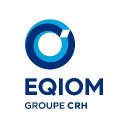 Dans le Pas de Calais, la cimenterie d'Eqiom va monter en cadence et se décarboner - 27/02/2024
Dans le Pas de Calais, la cimenterie d'Eqiom va monter en cadence et se décarboner - 27/02/2024
 Le ciment bas carbone de Hoffmann Green intègre les rayons des grandes surfaces de bricolage - 01/02/2024
Le ciment bas carbone de Hoffmann Green intègre les rayons des grandes surfaces de bricolage - 01/02/2024
 Dans le Rhône, Lafarge travaille à la valorisation des bétons issus de la démolition - 09/12/2023
Dans le Rhône, Lafarge travaille à la valorisation des bétons issus de la démolition - 09/12/2023
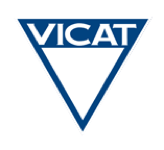 En Eure-et-Loir, Vicat Produits Industriels modernise son usine pour 8 millions d’euros - 12/10/2023
En Eure-et-Loir, Vicat Produits Industriels modernise son usine pour 8 millions d’euros - 12/10/2023
 Volkswagen détrône Leroy Merlin au classement des sociétés étrangères en Russie. - 03/10/2023
Volkswagen détrône Leroy Merlin au classement des sociétés étrangères en Russie. - 03/10/2023
